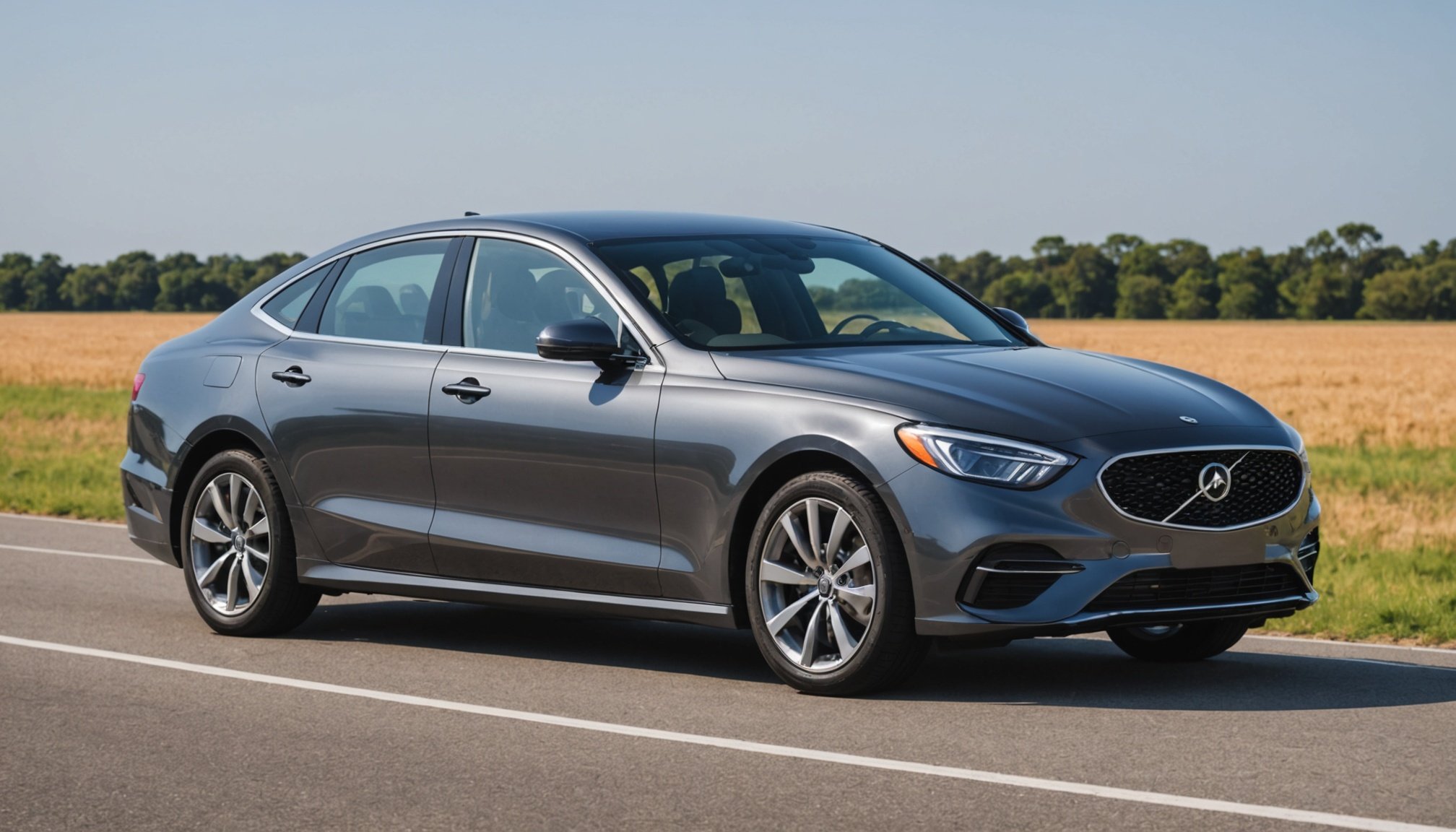In today’s automotive industry, the focus on fuel consumption and performance is more significant than ever. With escalating environmental concerns and advancing technological innovation, understanding the components that influence a vehicle’s efficiency is essential. Among these, vehicle weight emerges as a critical factor impacting both fuel economy and performance. This article delves into the intricate relationship between a vehicle’s weight and its overall efficiency, addressing how it affects the engine’s power, emissions, and the broader fleet’s energy consumption.
The Impact of Vehicle Weight on Fuel Economy
Vehicle weight is more than just a number; it is a fundamental aspect influencing a car’s fuel economy. The heavier a vehicle, the more energy required to move it, which directly impacts fuel consumption.
Also to see : How can you effectively plan a multi-stop road trip with your vehicle?
Understanding the Basics
When considering fuel consumption, the terms curb weight and gross vehicle weight (GVW) become particularly relevant. Curb weight refers to the car’s total weight without passengers or cargo, while gross weight includes the maximum capacity the vehicle can handle. Both metrics play into how much fuel the engine needs to consume, particularly during acceleration.
The Engine’s Burden
A heavier car demands more power from its engine to combat the force of inertia. This is why sports cars, designed for performance, often prioritize a lighter build to enhance power-to-weight ratio. The engine’s work increases exponentially with weight, consuming more energy and thereby burning more fuel. Materials used in car manufacturing, such as aluminum or high-strength steel, can support lighter designs and improve fuel efficiency.
Topic to read : How do you properly maintain your car’s air conditioning system for efficiency?
Emissions and Environmental Impact
With increased fuel consumption comes higher emissions. Heavier cars tend to produce more emissions, contributing significantly to environmental degradation. As such, reducing vehicle weight is an effective method to align with fuel economy standards and reduce carbon footprints.
The Role of Fleet Management
In the context of fleet vehicles, the cumulative impact of weight is magnified. Large fleets with heavy-duty vehicles face significant energy expenses and environmental consequences. Employing lighter vehicles can lead to substantial fuel and cost savings. Fleet managers thus prioritize weight reduction strategies to optimize performance and minimize operational costs.
Power and Performance: Beyond the Numbers
When discussing vehicle performance, the conversation naturally shifts to power and speed. Yet, weight plays a profound role in how these attributes are realized.
Acceleration and Speed
The physics of motion dictate that the greater the weight, the greater the force needed for acceleration. In motorsport, reducing the curb weight is a common tactic to achieve faster lap times. It allows for quicker acceleration and higher speeds without necessarily increasing engine size or power output.
Maneuverability and Handling
Lighter vehicles generally offer superior handling and agility compared to their heavier counterparts. The weight affects how a vehicle responds to steering inputs, brakes, and navigates curves. Drivers can experience a more responsive and engaging ride, especially important in performance vehicles where precision is vital.
Engine Design and Efficiency
Automakers are increasingly designing engines that maximize output while minimizing weight. Innovations like turbocharging and hybridization allow for increased power without compromising on weight. These engines enable drivers to experience enhanced performance while maintaining fuel efficiency.
The Balance of Power
While weight reduction can improve performance, a balance must be struck. Lighter vehicles may compromise on safety and durability if not carefully designed. The choice of materials, such as carbon fiber or advanced composites, becomes critical in achieving this balance, allowing for a robust yet efficient vehicle.
Weight Reduction Strategies in Modern Vehicles
Automakers face the challenge of creating vehicles that are both lightweight and capable. As such, exploring innovative strategies to reduce weight is paramount in modern vehicle design.
Advanced Materials and Manufacturing
The adoption of advanced materials such as aluminum, carbon fiber, and high-strength steel is central to weight reduction initiatives. These materials offer the same, if not greater, strength than traditional steel at a fraction of the weight. Additionally, modern manufacturing techniques, including 3D printing and extrusion, allow for precision in reducing excess material.
Aerodynamics and Design
Beyond materials, the vehicle’s design plays a vital role. Streamlined shapes not only reduce drag but also minimize weight by eliminating unnecessary bulk. Aerodynamic efficiency contributes directly to fuel economy and overall performance.
Hybrid and Electric Vehicles
As the industry gravitates towards hybrid and electric vehicles, weight reduction becomes even more critical. Batteries, a significant component of such vehicles, are inherently heavy. Engineers strive to offset this weight through lighter chassis and body structures, ensuring the vehicle remains efficient and powerful.
The Role of Innovation
Innovation drives progress in weight reduction. From engine downsizing techniques, employing smaller yet more powerful engines, to the use of recycled and sustainable materials, each advancement supports the overarching goal of achieving maximum efficiency with minimal environmental impact.
The Future of Vehicle Weight and Efficiency
As we look to the future, the relationship between vehicle weight, fuel consumption, and performance continues to evolve. The automotive industry is at a crossroads, where efficiency and sustainability drive innovation.
Embracing New Technologies
Technology is the linchpin in redefining how weight impacts vehicle efficiency. Emerging technologies such as lightweight battery systems for electric vehicles, and the integration of AI for optimized aerodynamics, are paving the way for more efficient cars.
Regulatory Standards and Compliance
Governments worldwide increasingly impose strict emissions and fuel efficiency standards. Automakers must adhere to these regulations, which often necessitate weight reduction as a primary strategy for compliance.
Consumer Preferences and Market Trends
Consumers are becoming more environmentally conscious, favoring vehicles that offer excellent fuel economy without sacrificing performance. This shift in consumer preference is motivating manufacturers to prioritize weight reduction in their designs.
Collaboration and Sustainability
The path to achieving lightweight vehicles lies in collaboration across industries. Partnerships with tech companies, material scientists, and environmentalists will foster innovation that meets both consumer and regulatory demands.
The journey towards greater vehicle efficiency and reduced environmental impact is one where weight plays a defining role. As the automotive landscape evolves, embracing change, and leveraging technology will ensure that the industry meets the challenges of the future with resilience and ingenuity.
In essence, vehicle weight is a critical factor influencing fuel economy and performance. As we move towards a future characterized by environmental awareness and technological advancement, understanding and optimizing weight becomes ever more significant. Through innovative materials, strategic design, and collaborative efforts, the automotive industry is poised to deliver vehicles that are not only efficient but also sustainable and high-performing. Embracing these changes ensures that we remain at the forefront of automotive excellence, balancing performance with environmental responsibility.











